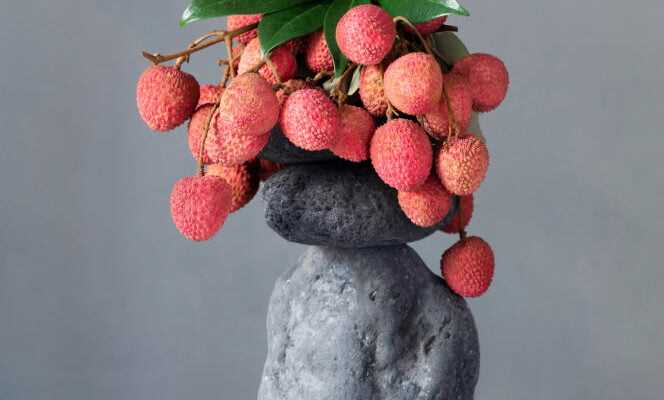The most awaited fruits of the southern summer, lychees are a bit like Reunion’s Christmas balls. In the gardens of Île Bourbon, it is not uncommon for a lychee tree – or “litchi foot”, as they say over there – to crumble under the clusters of red spheres, from November to January, like a fir tree. gleaming. “These fruits are really a marker of the holidays”, underlines Didier Roger, producer of lychees and victoria pineapple near Saint-Louis, in the south of the volcanic confetti of the Indian Ocean.
“ Everyone waits feverishly for the moment when they can start picking or buy several kilos from the bazardiers. [les marchands de fruits et légumes locaux] on the side of the road, adds the grower, recalling how, in his youth, he and his buddies offered old people to climb their tree “break” the bunches of lychees. By stuffing themselves, on occasion, with their juicy and fragrant pulp.
The lychee fits perfectly with the concept of the pavlova, this dessert of Australian origin superimposing, by the minute, meringue, whipped cream and assortment of fruits.
Long a tropical privilege, the addictive tasting of fresh lychees now brightens the winter of many metropolitans. Before the start of the 1980s, most French people discovered the fruit in cans, bathed with a little syrup in a small bowl offered for dessert in “Chinese” restaurants.
Lychee – from Cantonese li zi – is indeed from China. The cultivation of this fruit of the family of Sapindacea (such as longan or rambutan, known as “hairy lychee”) is attested in the royal registers of Emperor Han Wudi, dating from 111 BC. It is said that it was also the favorite delicacy of Yang Guifei, favorite of Emperor Tang Xuanzong (685-762), who had it brought for her from the province of Guangdong, in the south of the country.
Over the centuries, these delicious trees were planted in the hot and humid areas of Asia (Vietnam, Thailand, India, etc.), before two French botanists and explorers, Pierre Poivre and Joseph-François Charpentier de Cossigny de Palma, did not introduce, in 1764, the lychee to Bourbon Island. The fruit adapted particularly well to the rainy east coast of Reunion – the majority of the island’s 300 or so producers are located there today, between Saint-Benoît and Sainte-Rose – before multiplying in the rest of the Mascarene Archipelago and Madagascar. Having become, with 100,000 tons (including 7,000 sold in mainland France), the world’s third largest producer behind China and India, “Red Island” supplies almost 80% of the European market.
You have 72.69% of this article left to read. The rest is for subscribers only.
